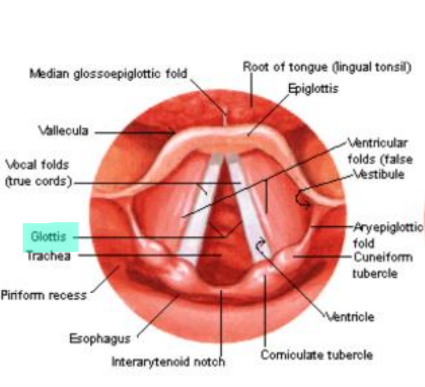1.23 Maneuvers Altering Cardiac Physiology
1/37
There's no tags or description
Looks like no tags are added yet.
Name | Mastery | Learn | Test | Matching | Spaced |
|---|
No study sessions yet.
38 Terms
Can certain maneuvers alter cardiac physiology to enhance or induce cardiac murmurs or to show the presence of cardiac pathology?
Yes.
Can gravity affect cardiac output?
Yes.
Some soldiers faint when standing up still. Why?
Because they have decreased cardiac output, meaning less blood is going to the brain, thus causing them to faint.
Supine to standing does what to venous return?
Decreases venous return, thus reducing ventricular stroke volume and cardiac output causing a reflex increase in heart rate and systemic vascular resistance.
Supine to standing will reduce what?
The intensity of all murmurs except for HCM and mitral valve prolapse.
Standing to supine does what to venous return?
It increases venous return, thus increasing ventricular stroke volume.
With maneuvers that increase venous return, what does this do to murmurs and pathology?
Mid-systolic ejection murmurs of valvular aortic and pulmonary stenosis will increase the intensity while the murmurs of HOCM and MVP will decrease in intensity.
Anything that increases venous return will do what to murmurs?
Increase the presence of murmurs.
Standing to walking will do what to venous return?
Increase venous return, stroke volume, cardiac output, and heart rate.
What does standing to squatting do to venous return?
It increases venous return (preload) and ventricular stroke volume.
Squatting causes most murmurs to increase except for what?
The murmurs of HOCM and MVP, which will decrease.
Upon squatting, the compression of the veins in the lower extremities does what?
Increases venous return to the right atrium.
Squatting commonly occurs in children with what? Why?
With TOF. This helps to increase preload into the right heart, which increases blood going to the lungs for oxygenation, thus helping those children with TOF to be relieved from the issues associated with TOF.
Squatting and the Valsalva maneuver has the same or opposite effects?
Opposite effects. Squatting increases end-diastolic volume due to increased venous return, whilst Valsalva decreases the preload.
How is the Valsalva maneuver achieved?
By the closing of the glottis and attempting to forcibly exhale (like when having a bowel movement).

The Valsalva maneuver increases intrathoracic pressure. How?
Since air cannot escape through the closed glottis and the thoracic and abdominal muscles are contracting, an acute increase in intrathoracic and abdominal pressures occurs.
The Valsalva maneuver interferes with venous return of the right side of the heart, thus doing what?
Decreasing the right ventricular preload, causing the left ventrticular end-diastolic volume to decrease.
How many phases are there in a valsalve?
4.
What is phase 1 of a valsalva?
Onset of straining and the beginning of an increase in intrathoracic pressure.
What is pahse 2 of the valsalva maneuver?
The persistant straining and maintenance of the increased intrathoracic pressure.
What is phase 3 of the valsalva maneuver?
Release of breath-holding and glottic pressure with a sudden drop in the intrathoracic pressure.
What is phase 4 of the valsalva maneuver?
Sudden increase in cardiac output and aortic pressure.
What is preload?
The volume of blood that is entering the heart.
What is the isometric handgrip maneuver?
This maneuver causes the arm muscle to contract and compresses the arteries of the arm.
What does the isometric handgrip do to blood flow?
It increases peripheral vascular resistance, blood pressure (systolic and diastolic) leading to an increase in LV afterload, as well as an increase in heart rate.
The isometric handgrip maneuver increases BP and afterload. This can do what?
The increased afterload attenuated the pressure gradient across the AoV, which leads to decreased stroke volume and ejection velocity. The heart rate will then increase to compensate for this.
What will increase win intensity during isometric handgrip?
Mitral regurgitation, aortic regurgitation, and VSD murmurs will increase in intensity.
What does amyl nitrate do?
It is a vasodilator which causes a decrease in venous return and blood pressure. It also increases heart rate.
With amyl nitrate, what murmurs are increased?
Aortic stenosis, aortic sclerosis, HOCM are increased (makes SAM worse), and MVP.
Amyl nitrate can be used in the echo lab for patients with what?
HOCM to provoke an obstruction.
With HCM, if the PW Doppler in LVOT shows a pressure gradient < 50 mmHg, should a valsalva be performed?
Yes. This will help to check if there is an obstruction when the heart is provoked. Once this is done, place a CW Doppler in the LVOT to get the max velocity due to the obstruction.
With HCM, if the PW Doppler in LVOT shows a pressure gradient > 50 mmHg, should a valsalva be performed?
No. The obstruction is already severe and making the patient do a maneuver can be fatal.
What does the hand grip maneuver do to the ventricular volume, murmur intensity, and the LVOT gradient?
It increases ventricular volume, decreases murmur intensity, and decreases LVOT gradient.
What does the valsalva maneuver do to the ventricular volume, murmur intensity, and the LVOT gradient?
It decreases ventricular volume, increases murmur intensity, and increases LVOT gradient.
What does the amyl nitrate do to the ventricular volume, murmur intensity, and the LVOT gradient?
It decreases ventricular volume, increases murmur intensity, and increases LVOT gradient.
Respiration affects the venous return to the heart by doing what?
Increase venous return to the right heart by increasing intrathoracic pressure, causing the IVC to collapse.
Inspiration increases venous return, and does what to stroke volume?
Increases stroke volume.
Expiration increases or decreases venous return?
Decreases venous return.